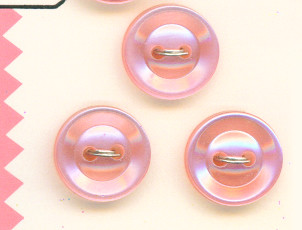It was said that Metacity doesn’t let you decide whether titles of windows are left-justified (as in modern versions of MS Windows) or centre-justified (as on the Mac). But actually, it’s a theme issue to decide how a title is drawn. Here’s how to change your theme from centre-justified to left-justified.
First, find out what theme you’re using. We’ll use gconftool to do this, because it’s the easiest to demonstrate.
$ gconftool -g /apps/metacity/general/theme
Human
Okay, so we’re using Ubuntu’s Human theme here (you may well be using something else, of course; substitute its name for Human in what follows). Presumably you don’t want to work on the main system version of the theme, so take a personal copy and tell Metacity to use it:
$ cp -R /usr/share/themes/Human ~/.themes/LeftHuman
$ gconftool --type=string -s /apps/metacity/general/theme LeftHuman
It will switch to the new theme, but obviously it will look identical at present.
Unfortunately, as I mentioned the other day, there’s no fancy editor for Metacity theme files: you’ll have to edit the file by hand. But it only needs to be done once. So, open ~/.themes/LeftHuman/metacity-1/metacity-theme-1.xml in your favourite editor and search for <title (“title” preceded by a less-than sign, i.e. the opening of a “title” tag in XML). You will see that any of these you find have a formula for their x attribute that involves taking widths and halving them, which screams about centring. All you have to do is change this formula to zero for all the title tags in the file.
However, in the Ubuntu Human theme they obtain a shadow effect on the letters by printing the title multiple times at different tiny offsets. For cases like these, you need to keep the offsets in order to keep the shadow effect. So you’d change
<title color="shade/gtk:bg[SELECTED]/0.75"
x="(3 `max` (width-title_width)) / 2 + 1"
y="(((height - title_height) / 2) `max` 0) + 2"/>
<title color="shade/gtk:bg[SELECTED]/0.7"
x="(3 `max` (width-title_width)) / 2 + 2"
y="(((height - title_height) / 2) `max` 0) + 2"/>
<title color="shade/gtk:bg[SELECTED]/0.4"
x="(3 `max` (width-title_width)) / 2 + 1"
y="(((height - title_height) / 2) `max` 0) + 1"/>
<title color="#ffffff"
x="(3 `max` (width-title_width)) / 2"
y="(((height - title_height) / 2) `max` 0)"/>
to:
<title color="shade/gtk:bg[SELECTED]/0.75"
x="1"
y="(((height - title_height) / 2) `max` 0) + 2"/>
<title color="shade/gtk:bg[SELECTED]/0.7"
x="2"
y="(((height - title_height) / 2) `max` 0) + 2"/>
<title color="shade/gtk:bg[SELECTED]/0.4"
x="1"
y="(((height - title_height) / 2) `max` 0) + 1"/>
<title color="#ffffff"
x="0"
y="(((height - title_height) / 2) `max` 0)"/>
and so on throughout the file.
When you’re done:
$ metacity-message reload-theme
and presto!
You might say that this is a lot of work compared to just selecting a “left justify” button somewhere, and it is, but assuming your original theme file was free software, you can distribute derivatives of it. So you should feel free to give your new left-justified version to your friends or stick it up on the web somewhere. Don’t forget to add your name and copyright in the <info> section first.
 Ubuntu Lucid Lynx was released last week. It modifies the order of the titlebar buttons so that they all appear on the left-hand side. Some people would like the buttons in another order.
Ubuntu Lucid Lynx was released last week. It modifies the order of the titlebar buttons so that they all appear on the left-hand side. Some people would like the buttons in another order.
 This is in answer to Stuart Langridge’s question about how the XFCE theme
This is in answer to Stuart Langridge’s question about how the XFCE theme 